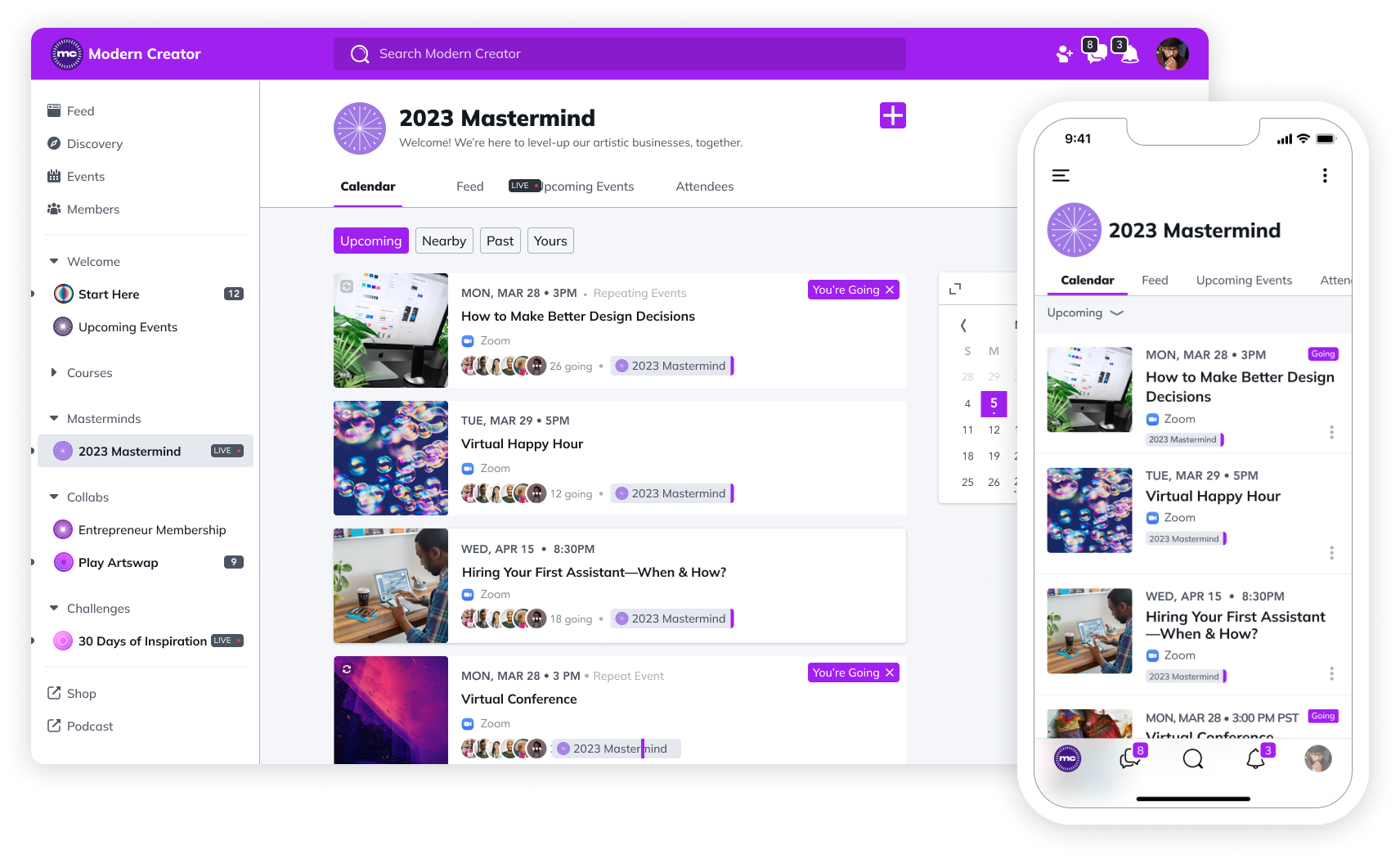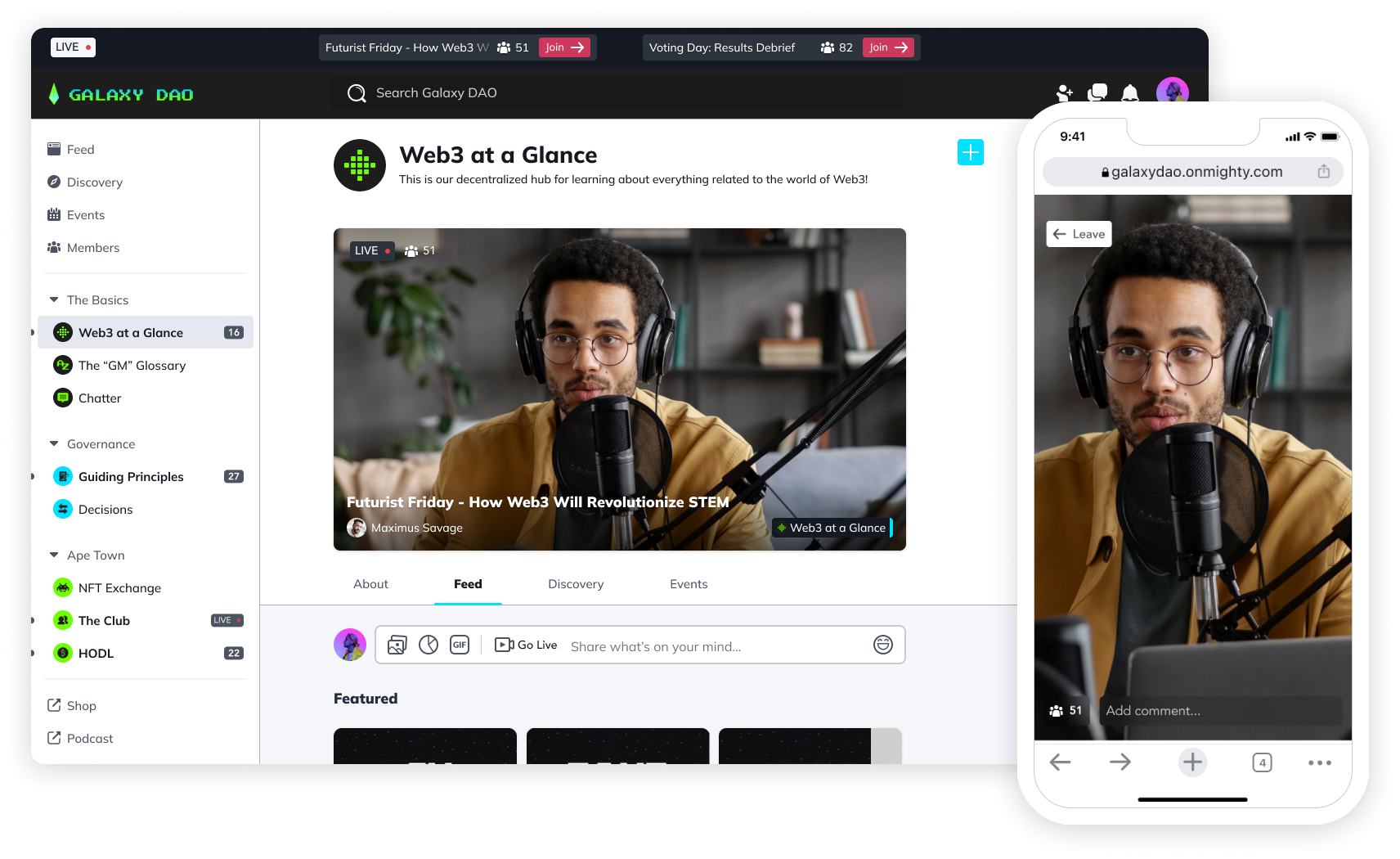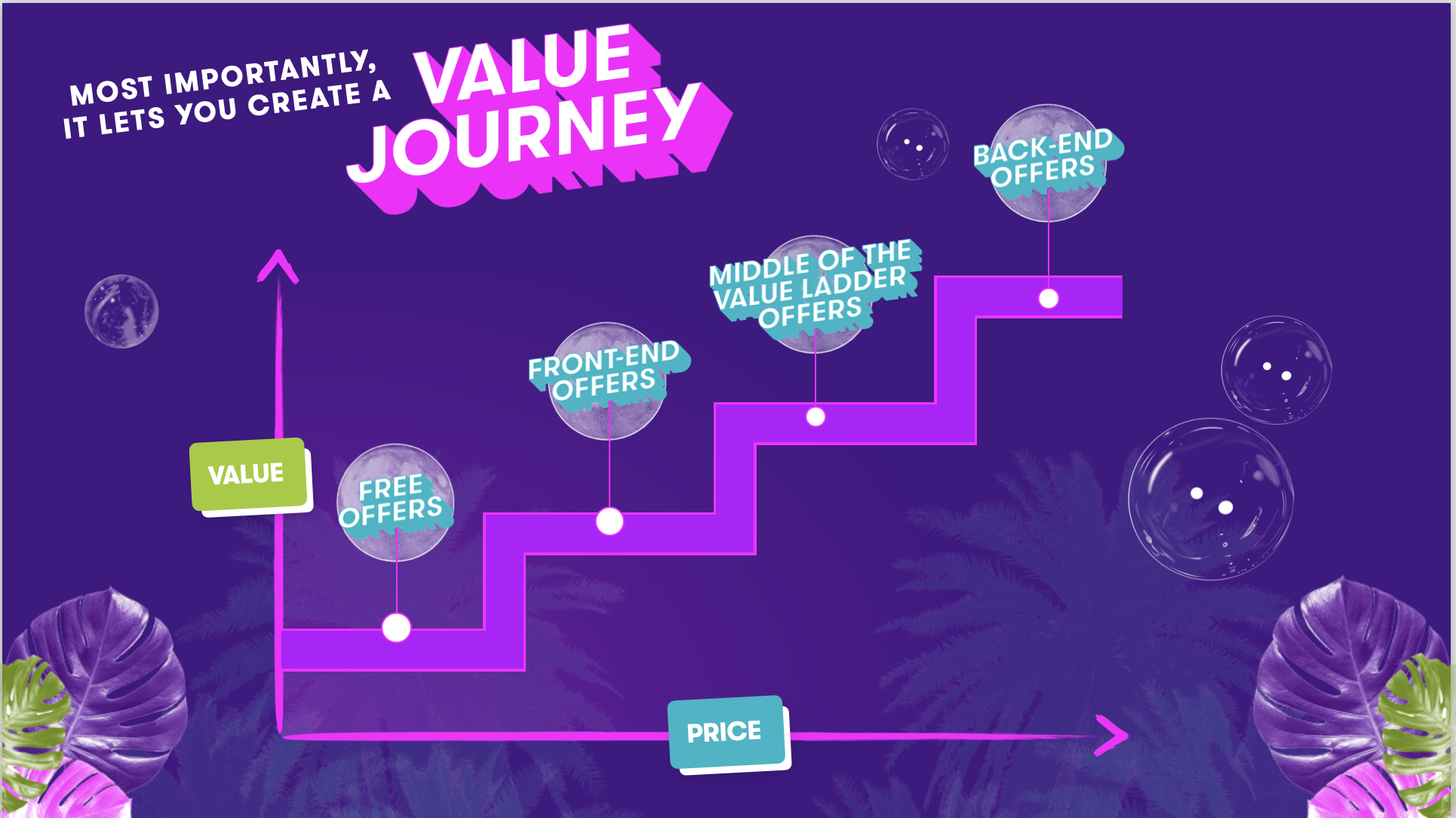Creators & Entrepreneurs
Our Guide to Bootstrapping Your Business in 2026
In this article, we introduce you to bootstrapping and talk through what you need to know to get started with bootstrapping your own business.
Author
Last Updated
December 11, 2025

There are a lot of different ways to approach doing business. And no one way is right. If you are one of the business owners who can build a successful business, more power to you – however it is you do it.
But there's one way of building a business that has got a lot of traction: bootstrapping. At Mighty, we love bootstrapping, probably because we’ve watched creators start with a few passionate members and grow into thriving, successful businesses doing 5 and 6 figures a month.
Bootstrapping a business has a lot of advantages, and can be a fantastic road to profitability. In this article, we're going to introduce you to bootstrapping. We'll talk about what it is and isn't, and talk through what you need to know to get started with bootstrapping your own business.
If you want more support in building your online community, come join OUR Mighty Community for free and meet other new and established community owners! We’d love to meet you. Join for free!
What is bootstrapping in business?
Bootstrapping means building a business to profitability without taking outside funding. In today's startup environment, it's common for founders to do rounds of funding from investors and venture capitalists.
Bootstrappers don’t take outside money, usually focusing on keeping a low overhead and getting revenue quickly so that they don't have to take this kind of funding.
Advantages of bootstrapping a business
Ownership. When you take outside funding or venture capital, you give up ownership. This can make sense in some cases, to get a company off the ground – especially if the business needs capital. But the more people you have at the table, the more you have to answer to. If you have a viable business that can be bootstrapped, usually you can retain complete ownership.
Control. We sort of just mentioned it, but bootstrapping also gives you control. You can make decisions without answering to outside influence.
Profitability. Bootstrapping focuses on getting a product up and profitable as quickly as possible. This is a really great way to build a business. If it fails, it fails fast. Some founders can take huge chunks of money from investors and go years before realizing a business isn't going to work.

Disadvantages of bootstrapping
Less capital. Obviously, if you don't have outside investors, you might not have a ton of capital to get things off the ground. Some founders will turn to debt, which has its place, but you're on the hook for it.
Less wisdom. Ideally, taking money from investors isn't just about giving up control. You get the voice of experience at the table, advice and connections. This can be really beneficial. It's why founders go on Dragon's Den (well... that and the TV exposure).
Tighter timelines. Again, you need to get a business up to profitability fast. Either that or you are working another job to put a roof over your head while you build your company.
Examples of bootstrapping in business
Here are some companies you experience every day that you probably never knew were bootstrapped!
Apple: Founded by the Steves, Jobs and Wozniak, Apple started in Steve Jobs’ garage in 1976 with a mission to bring personal computers to the masses.
Meta: Facebook was bootstrapped until it filed for IPO in Jan 1, 2012 – looking for $5 Billion.
Atlassian: was famously started in Australia by two founders with a $10,000 credit card.
KFC: Harland Sanders started frying chicken at his roadside cafe with a secret receipt of 11 herbs and spices. He eventually started franchising (and dressing like a historic colonel).
Plenty of Fish: A dating site that started as a free app by Markus Frind and sold to Match for $575 million.
Examples of Bootstrapping on Mighty
Wealth Builders Community: Launched by Ashley Fox, the movement provides financial advice to the 99% of people Wall Street won’t talk to – it made $100,000 in its first 2 weeks.
Code Red: A $10 million nutrition and weight loss business launched by Cristy “Code Red” Nickel.

Guide to bootstrapping your business
1. Focus on an Ideal Client
The place bootstrapping is usually going to start is with an Ideal Client or avatar (similar to the concept of an Ideal Member for those starting a community). This is especially true in the creator economy.
It usually comes down to:
Who is your Ideal Client?
What problem do they have?
How does your product or service solve it for them?
It's a little dated now, but for creators, it's hard to beat the idea Kevin Kelly wrote about in his book, "1000 true fans."
Instead of selling millions of things, focus on those thousand true fans. Build a profitable business from them. It's a great guideline for a creator-based, B2C service.
But whether you’re reaching 1,000 or millions, you need a clear idea of who they are before your product or service can add value to them.
2. Revenue from day one
One of the key things for successful bootstrapping is going to be fast revenue. It doesn't have to be true in every single case, but the longer it takes to get to revenue the longer slog you'll have as a creator.
Try to think about how to get to revenue fast. One thing that we've seen work really well in different community and course businesses is pre-selling. Pre-selling can get you to revenue before you even build something, and it can be the ultimate way to validate a product.
3. MVP
If you're watching football or baseball, MVP means something very different.
In the world of business, MVP stands for a minimum viable product. It's easy to be a perfectionist, focusing on getting everything completely right before you release something to the public. Some founders and entrepreneurs take forever to get everything right.
Enter… a minimum viable product.
The term was coined by Eric Reis, who developed the lean startup methods. A minimum viable product is the simplest product that you can ship. Instead of worrying about getting everything right, create a basic product so that you can start generating revenue.
In bootstrapped businesses, minimum viable products are an essential part of getting to revenue. When you're bootstrapping, you don't have the luxury of getting everything perfect. Start getting some revenue and adapt and learn as you go.
4. One great funnel
There are a lot of different ways to sell products. And established companies might create multi-tiered funnels that bring in customers from advertising, organic search, social media, word of mouth, and who knows what else.
When you're bootstrapping, it's often best to focus on one funnel. Focus on one thing that works.
For example, let's say you discover that advertising for your webinar on Facebook works great. It brings you qualified leads.
Say you have to spend $200 in advertising to get 40 qualified leads. Let's say 2-4% of those will actually buy - that's a pretty standard conversion rate.
That means one or two people will buy. Let’s say two. If you spend $200 to get 2 customers, your cost of acquisition per customer is therefore $100.
Cost per lead (200/40 = $5 per lead)
Cost per acquisition ($200/2 = $100 per customer)
You need to get $100 in revenue out of these two customers to break even.
Building a sales funnel is a tried and true way to build a business, and if you can get the numbers right, you can be super profitable. Let's say that our funnel above led to people purchasing a monthly subscription for $50, and the average person stays for 12 months. The average lifetime value of a customer is $600.
You’ve spent $200 to get those two customers, who are worth $1,200 to your business.
Is that worth it?
If you are selling an online course with super low overhead, this would be a no-brainer. If you have a business that's product-focused with expenses like staff, shipping, inventory, etc., you have to do the math to see if these numbers make sense.
But the great thing about a good funnel is that it can be relatively stable. It takes time to develop your baseline numbers. But eventually, you can be pretty confident that if you put $1,000 into your advertising, you will get $6,000 out of it.
5. Low overhead
This brings us to the next secret of great bootstrapping: low overhead.
Let's imagine you were opening a restaurant. It would be ridiculously hard to bootstrap it. You would need equipment, inventory, a space, permits, and probably staff. You're looking at spending thousands of dollars before you bring in a penny.
On the other hand, let's say you're selling a cohort course. If you choose a great platform (like Mighty!), you would pay a minimum monthly cost that would cover literally every aspect of your business. You would get a great platform, the ability to brand it yourself, and a point of sale.
The cost to deliver that cohort course is going to be extremely low. And low overhead makes bootstrapping way easier.
6. Recurring revenue
It's not an absolute must, but here's something to consider. If you’re bootstrapping a business, recurring revenue is a big boost.
Recurring revenue is basically when customers give you money every month. Your Netflix subscription or gym membership produces recurring revenue for those businesses.
Let's imagine you bootstrap a consulting business. Generally speaking, you might do a project for a client and charge for it. So far so good. But then, you have to go find another client.
The great thing about recurring revenue businesses is that you tend to keep your clients. For example, when we see people start communities on Mighty, many of them will keep those members for years.
Some businesses gain customers and then need new customers every month. But recurring revenue businesses gain customers, keep them, then add more customers to their monthly pool. If you have a relatively low churn rate, it's a great way to bootstrap.
7. Multiple offers for each Ideal Member
One of the true paradoxes of business is that often, your best customers are the ones who have already bought from you. If people have bought something, and are satisfied with it, they're more willing to buy from you again.
But a lot of business owners forget this. They think "Oh, I already sold to that person."
And they miss one of their greatest revenue sources: existing customers.
Figure out ways to offer your existing customers more value. We like to call this the value ladder. Chances are, some of your customers will want more from you.

For example, let's say you are offering a community membership based on career mastery. You have 100 happy members in your community. It's easier to offer them something else than to go find 100 more members.
How about a career mastermind or a dedicated course? How about one-on-one coaching for a select few?
Adding offers for your existing customers is just smart.
8. Invest in scaling
Last but not least, the secret to bootstrapping a business, put some of that money back into scaling. It could be investing back into ads or improving your product. It could be hiring out some talent to make your life easier.
Bootstrapping isn't just about getting some cash coming in every month. It's about growing a business to profitability and high value without actually taking investor money.
As you grow, take a look at how you can scale your impact and revenue.
Bootstrapping Checklist
Focus on an ideal client
Get revenue ASAP
Develop a minimum viable product (or offer)
Create one great funnel
Keep your overhead low
Aim for recurring revenue (if appropriate)
Create multiple offers for your customers
Invest in scaling
Ready to start?
If you're ready to start bootstrapping your business, come build with Mighty! Mighty Networks is a cultural software platform that brings together community, courses, content, and commerce. And our flexible Spaces let you mix in discussions, live events, live streaming, member profiles, chat and messaging, and more.
You can sell in 135 different currencies or even monetize with token-gating. And we've got a great app for every device, or we'll work with you to build a white-label app with Mighty Pro.
Many of our Mighty hosts have built six and seven-figure businesses, bootstrapping their way to fantastic monthly profits. And businesses built on Mighty check all of the boxes above.
If you want to get inspired, click through our case studies and read what some amazing business owners have built on Mighty. And if you're ready to start, you can try it free for 14 days - no credit card required.
Ready to start building your community?
Start a free 14-day trial to explore Mighty—no credit card required.
More like this
Join Mighty Community
Learn the principles of Community Design™ (and see them in action) alongside thousands of creators and entrepreneurs. It's free to join!

Online Courses
Creating a Course
Teaching a Course
Course Platforms
Selling a Course
Communities & Memberships
Community Platforms
Managing a Community
Building a Community
Growing a Community
Monetizing a Community
Content Creation
Creators & Entrepreneurs
Monetization
Content Creation
Starting a Business
Website Builders
Creating & Managing a Website
Events
Event Platforms
Hosting & Marketing Events
Branded Apps
Creating a Mobile App
Coaching Apps
Community Apps
Coaching
Mastermind Groups
Starting a Coaching Business
Coaching Platforms
Filter by Category
Online Courses
Communities & Memberships
Creators & Entrepreneurs
Events
Branded Apps
Coaching
Build a $1 Million Community
This free masterclass went viral—sign up to learn why.

























